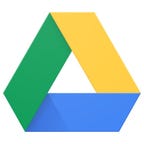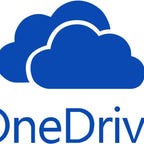 Why You Can Trust CNET
Why You Can Trust CNET How to share files with your team while working from home
We've got a beginner's introduction to file-sharing services to help you choose which is best for you and your team.
Thanks to the coronavirus pandemic and various lockdowns, quarantines and shelter-in-place orders, many people are now getting used to working from home for the first time. One obstacle you and your coworkers may have run into is the question of how to send and receive files that are too large to attach to an email. Luckily, what was once a complicated ordeal is now quick and easy.
Here are some the easiest file-sharing starter services to work with, especially if you're a beginner.
Read more: Best services for working, eating and entertaining yourself at home
If your company uses a version of Gmail for its corporate email system, you may have seen Google Drive, or already have access to it. Even if it's not part of your company's existing online environment, Google Drive is likely the easiest bet compatible with the most systems to get your work in the right hands.
Signing up for a free Google Drive account gets you 15GB of storage. If you think you'll need more storage than that, you can pay $30 per year to get 200 GB of space. If you're considering storage needs for your home-based business, a Drive Enterprise account will only cost $8 per month per user, and it comes with unlimited storage. Business plans also come with 24/7 phone and email support. You can use Google Drive across Windows, Mac, Android and iOS.
The flexible, compatible nature of Google Drive is its strongest feature. By downloading the Google Drive client for your desktop, you can have your MacOS or Windows machine automatically sync your files to Google Drive, ensuring that your work is always backed up. Google Drive's search bar also makes online document organization less cumbersome. Any photo, document, folder or individual file can be shared with other Gmail users, who can work with you inside of your documents in real time.
If your company uses Microsoft Outlook, you may already have access to OneDrive, Microsoft's answer to Google Drive. Just like Google Docs, the OneDrive file management system offers real-time document collaboration and mobile apps for both Android and iPhone.
If you're looking to keep costs down, you can get a free OneDrive account with 5GB of storage. Paid plans for individual users start at $2 per month for 100GB of storage. Office 365 Personal customers can get 1TB of storage for $70 per year, while Office 365 Home customers can get 6TB for $100 per year, spread across six users.
Along with 24/7 phone support, OneDrive's best perk for paid plans is its ransomware detection and recovery features.
Dropbox has become one of the best-known and most reliable file-sharing apps worldwide. Its desktop client runs in the background and can be set to sync your files automatically. Dropbox also offers a slate of third-party app integrations, making it ideal for whose work requires exchanging files across multiple companies using different file management systems.
Signing up for a free account with Dropbox gets you 2GB of storage, compared to Google Drive's offer of 15GB free. But Dropbox is compatible with most Google Drive and Microsoft Office files, making it a more practical option if you need more flexibility in the types of files you can share. For $10 a month, you can get a personal box that can store 100GB. If you're going the home business route, Dropbox Business costs the same amount but comes with a whopping 2TB of storage.
Dropbox's best perk? Business plans come with a layer of encryption and offer 120 days of file recovery. Not bad.
IDrive might be the easiest file-sharing client to set up. It also comes with many of the same features as the above services, including an automatic syncing option for your desktop and mobile, bulk uploading options for multiple files, and a search feature to quickly find a file. To top it off, IDrive offers solid encryption, data restoration, a full suite of desktop clients and mobile apps for both Android and iPhone. The trade-off? It's a little pricey.
While its free plan offers 5GB, its personal paid plans start at $70 per month for 2TB of storage. To get 5TB, it'll cost you $100 per month. The two-year 2TB plan costs $140 and the two-year 5TB plan costs $200. Currently, IDrive is offering some tempting discounts, though. For a limited time, you can get one year and 2TB for $52.
Business-level plans (allowing unlimited user accounts) range from $100 for one year and 250GB all the way up to $1,000 for 1.25TB for two years.
As budgets tighten in the wake of market uncertainty, an economy option might be worth considering for your file transfer needs. MediaFire isn't as popular as the above options, but it's one of the least expensive and easiest-to-use file management systems currently available.
Free accounts get 10GB of storage. Paid plans start at less than $4/month for 1TB of storage, with the ability to automatically virus-scan and download entire folders at once, upload from any website and dodge ads. Business plans run $40 per month, allowing up to 100 users and a massive 100TB of storage.
The trade-off for the price cut and virus scan is a slightly slower upload speed, and the limited platform options. Though it offers no desktop clients, it has apps for both Android and iPhone.
Read more:






